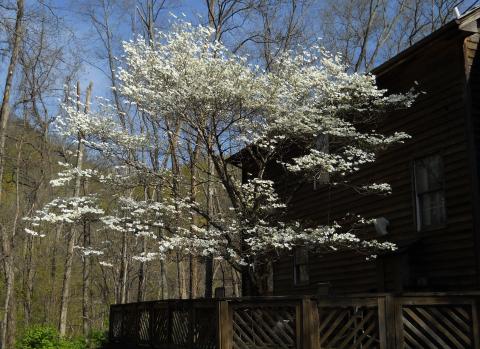Trees
TreesI was having lunch with a friend the other day. We had finished our deliveries for the FISH food pantry and were waiting for our burgers to arrive. The conversation turned to the problems older people (like the two of us) have with technology, and Don described a conversation he had recently had with tech support. “I could follow him down the tree,” he said, “as long as he didn’t go too fast.” Don is a retired chemist, and he was talking about a decision tree.
Scientists are familiar with this kind of tree, where the answer to one question leads down a specific path to another question, and by following the branches down they arrive at the solution to their problem. Mechanics are also familiar with this process; if a car is towed in that won’t start, he or she starts eliminating possibilities with a decision tree: Does it have fuel? If the answer is yes, then: Is the fuel getting from the tank to the engine? If it is, then: Is the battery dead? and so on, until all the things that are not the problem are eliminated. The best mechanics, like the best scientists, don’t rush through the process. They make sure of their answers before they move on, and, most importantly, they know what questions to ask. Figuring out the right question, and the right next question, is a life skill that is valuable in many areas and often in short supply.
The trees I am surrounded with up here on House Mountain are of the organic type and are still bare as I write this (although some of them are starting to bud). It’s always an attractive place to live, but in not too many weeks the slow motion explosion of green will begin and the dogwood growing through the back deck will start to set on blooms. By far my favorite time of year; here in East Tennessee we have a staggering variety of trees, each beautiful in its own way. Trees are potentially a source of shade, a windbreak, fuel for the winter, lumber for a construction project, an inspiration for a photograph, painting, or poem, something to climb or swing from, a home for any number of animals or insects, a privacy screen, and I’m sure I’m leaving some things out. Sometimes choosing one of these uses makes it impossible to enjoy or use in any other way. And so we’re back to the decision tree. There’s a big hickory in our front yard that will probably not hit the house if it falls, but it might. If we have it cut it becomes fuel for our woodstove or raw material for a house or a piece of furniture or a sculpture, but it’s no longer able to shade our house from the summer sun or hold up a bird’s nest. Some decisions can be reversed, revised, or taken back, but others are permanent and can’t be altered. There aren’t a lot of natural consequences in today’s world, most consequences are man-made and often arbitrary, but a few natural ones still exist. You can’t uncut a tree.
Jim Hartsell lives on House Mountain in Northeast Knox County and is the author of the Boone Series, the story of an Appalachian teenager growing up with the odds against him and no family to help him out. You can get descriptions of each book in the series, order your own copies, and check out his other books at his website, housemountainviews.com.
- Log in to post comments
